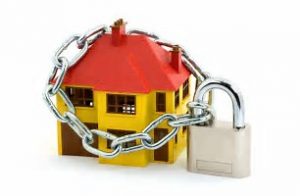Unlock Sustainable Wealth: Sure Fire Way to A Shrewd Portfolio
Unlock Sustainable Wealth: Sure Fire Way to A Shrewd Portfolio
Unlock Sustainable Wealth: Sure Fire Way to A Shrewd Portfolio. In today’s world, many people think of real estate investing and their return on the investment as the actual purchase price of the real estate. If the property doubles in value, they believe they have only doubled their investment. However, simple math is not the honest answer or the actual return. It is not what you purchased the property for that is the most critical piece of unlocking the sustainable wealth puzzle. It is your skin in the game; it is what you earned on your original down payment or cash outlay.
Understanding your real return on your investment is one of the principles of Vault to Investment Real Estate Success.
For the Boomer Generation, those born between 1946 and 1964, purchasing a home was almost a given; it was built into our DNA. For many of us, the municipal, state/provincial, and federal governments used home purchases to stimulate the economy in the late 1970s and early 1980s.
$180 Investment Turns Into a $30,000 Return On Investment
Unlock Sustainable Wealth: Sure Fire Way to A Shrewd Portfolio
My wife and I bought our first house, a brand new 4-level split with $180 out of our pocket. How could we buy a brand-new home for $180? When we purchased our house, the Federal government gave us $500, and the provincial government gave us $1000 as first-time home buyers. We also qualified for a CHMC (Canadian Housing Mortgage Corporation) high-ratio mortgage, which meant our down payment was $1680. With $1500 in government grants, we only had to fund $180. We sold it eight years later for double what we paid; $ 180 turned into over $30,000 return. Did we double our cash down payment investment; no, we sold our home for twice as much as the total purchase price.
Our net profit after mortgage interest was around $25,000. You might be saying, “Lucky Break, Rick.”
The thinking is that many Boomers created most of their net worth through real estate appreciation. The world is different today, despite an economic downturn in 2007 and 2008. Even more, most Boomers are still in good shape if they haven’t turned their homes into automated tellers.
Equity growth over time is always a pretty big deal, and even in today’s economy, this is still possible, not a boomer thing.
If you buy investment real estate based on appreciation, thinking you still live in the 1970s or 1980s, stop here and go no further. I would never tell you to buy real estate based on the principle of appreciation. However, this would be like having a one-legged stool and expecting it not to fall over eventually. The construction is flawed.
There are three types of real estate markets in the world:
- Hot
- Cold
- Just Right
You might think turning a $180 investment into a $30,000 return was a one-time lucky break, but there are markets where this can happen.
I don’t want you to build your investment real estate portfolio on this one component of returns. Remember, I am suggesting a long-term buy-and-hold strategy. I will show you what to do with any significant windfalls in equity growth.
Keep reading. These windfalls happen more than you think and continue to happen now and daily to many real estate investors.
Three Main Components of Your Return Strategy, Investment Real Estate:
- Net Income from Revenue
- Principle Paydown
- Equity Growth
The Right Combination Order:
If your real estate investment does not include these three elements as part of your combination to unlock sustainable wealth, you cannot open your Vault to Real Estate Success. Many real estate investors don’t think the order of these three components is essential to real estate investing; I do.
Like the combination of a vault, if you don’t have the combination numbers in the correct order, the vault will not open. If you follow the rule I am suggesting, it will not matter if you purchase investment real estate in good or bad times. You will succeed in building a strong foundation, unlocking sustainable wealth and creating a living legacy.
The three components of your combination are placed in this order; the first is net income revenue. Drew Brees, Super Bowl XLIV MVP and Quarterback for the New Orleans Saints, said'” You can’t go broke taking a profit.” Drew referred to moving the ball down the field when you are on offence. This situation is also actual in real estate investing.
According to Investopedia.com, “Net Income is calculated by taking revenues and adjusting for the cost of doing business, depreciation, interest, taxes, and other expenses.” Net income is often called “the bottom line” since it is at the bottom of the income statement.
As a real estate investor, the principal pay-down must be part of your net income statement to cover all costs. Your accountant will adjust your revenue statement for tax purposes and remove the principal pay-down before reporting your taxes.
Unlock Sustainable Wealth: Sure Fire Way to A Shrewd Portfolio
Please don’t get caught up in the trap that rookie and even experienced real estate investors make and use principle pay-down as a disguise for a poor cash-flowing real estate investment.
Don’t buy the property if the revenue does not cover all expenses—including principal paydown, a contingency fund for vacancies and maintenance work, and legal and accounting fees.
Should you have to take money out of your pocket every month to cover any costs, including principal paydown? However, what you see as equity can only be spent when a property is sold or refinanced.
Remember, refinancing comes with additional expenses, including an interest expense.
If you can include positive cash flow or net income as the first element in your combination, the other two factors will become the icing on the cake. Even more, they will taste great. Following this advice will ensure you never get in trouble and make your sleep more comfortable.
The best advice I received about adopting this philosophy was not to worry if you miss out on what you thought was a great deal. It’s like catching a bus; another is just around the corner.
I would suggest the second element in the right combination is the principle pay-down, which comes if you follow the first aspect of covering all costs plus contingency.
Unlock Sustainable Wealth: Sure Fire Way to A Shrewd Portfolio
In the beginning, when paying down the mortgage, the bank always takes their portion first and then gives you your share. It would help if you were happy to have the bank as your partner. You put in 20% of the purchase price, and the bank puts in 80%; positive cash flow makes this all possible.
Not only do you get to sleep more quickly, but you also make money while sleeping; the bank is your tooth fairy. Who would have thought?
The last element is equity appreciation. You can only access these funds if you sell the asset or refinance. We (this includes my real estate investment partners, my wife, and joint venture associates) are all about keeping a long-term hold on all of our investment properties. Unless unforeseen costs or market conditions change, we do not see anything coming.
In future blog posts, we will discuss refinancing equity appreciation or unexpected costs; equity appreciation will help grow your portfolio, and unforeseen expenses can create wealth reversal.
Let’s review one more time before we move on. Can you name my suggested order for the three income return components to investment real estate returns?


